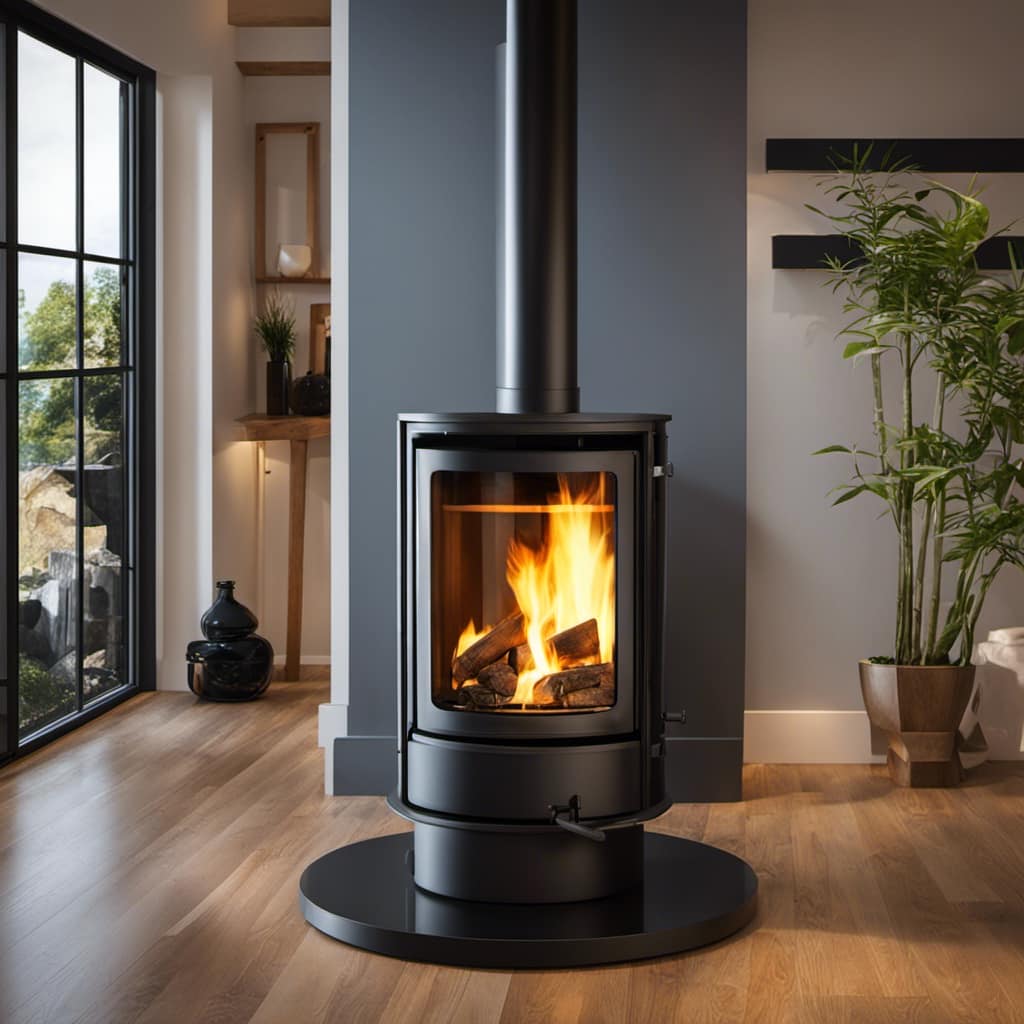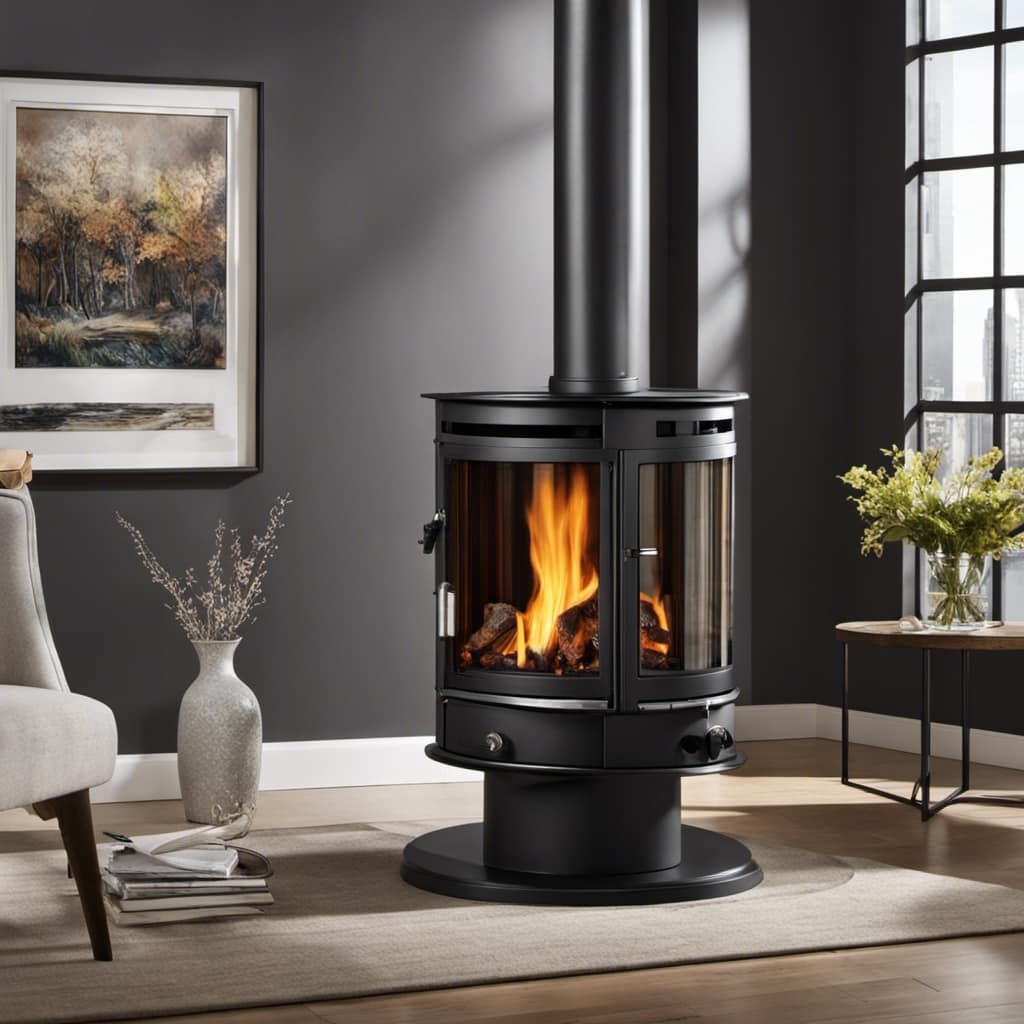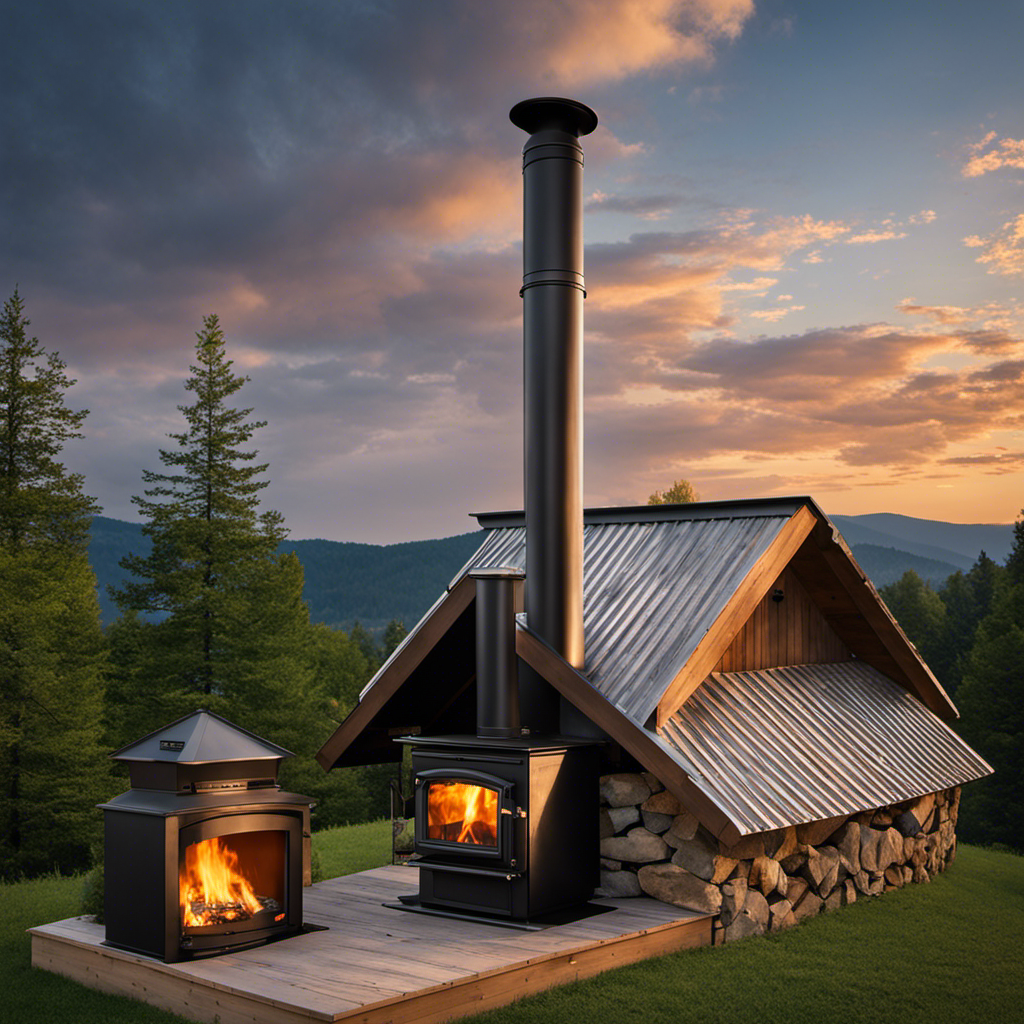
You might be wondering: Is it possible for a wood stove to actually produce electricity? The answer is indeed yes, it can, and I am excited to demonstrate how.
In this article, I’ll guide you through the process of harnessing the power of your wood stove to produce electricity. From choosing the right stove to wiring it up, I’ll provide you with all the information you need to create your own electricity-generating system.
So, let’s dive in and explore the world of wood stove electricity generation.
Key Takeaways
- Wood stoves generate electricity through thermoelectric conversion.
- Choosing the right wood stove designed for optimal power generation is crucial.
- Gathering the necessary materials and tools is essential for wood stove electricity generation.
- Regular maintenance and troubleshooting are important for optimizing and maintaining the wood stove electricity system.
Understanding the Basics of Wood Stove Electricity Generation
I’m currently learning about the basics of wood stove electricity generation. Wood stoves have the potential to generate electricity through a process known as thermoelectric conversion. This involves utilizing the temperature difference between the hot surface of the stove and the cooler environment to create an electric current.

The power output of a wood stove can vary depending on factors such as the size and design of the stove, as well as the quality of the thermoelectric materials used.
One of the main benefits of wood stove electricity is its renewable nature. Unlike fossil fuels, wood is a sustainable and readily available source of energy. Additionally, wood stove electricity can provide a reliable backup power source during power outages or in remote areas where grid access is limited.
Choosing the Right Wood Stove for Electricity Production
While researching wood stoves for electricity production, I learned that it’s important to choose a stove that’s specifically designed and equipped for optimal power generation. When it comes to wood stove safety precautions, it’s crucial to select a stove that has been tested and certified by reputable safety organizations. Additionally, proper installation and regular maintenance are essential to ensure safe operation.
To calculate electricity output, you need to consider factors such as the stove’s heat output, efficiency, and the amount of fuel being burned. By using the following formula, you can estimate the potential electricity generation: Electricity Output (Watts) = Heat Output (BTU/hr) x Efficiency (%) x 0.293. It’s important to note that this is just an estimate and actual results may vary.

Now that we understand the importance of choosing the right wood stove, let’s move on to gathering the necessary materials for wood stove electricity generation.
Gathering the Necessary Materials for Wood Stove Electricity Generation
To gather the necessary materials for wood stove electricity generation, one must ensure they have the right generator and cords. Sourcing components for this project is crucial, as it ensures that you have reliable and efficient equipment.
When choosing a generator, consider its power output and fuel efficiency. Determine the power requirements of your wood stove by calculating the wattage of the appliances you plan to connect. This will help you select a generator that can handle the load.
Additionally, make sure to choose high-quality cords that are suitable for outdoor use and can handle the power requirements of your setup.

With the right generator and cords in hand, you’re ready to move on to the next step, which is wiring your wood stove for electricity.
(Transition to subsequent section: In the following section, I’ll provide a step-by-step guide to wiring your wood stove for electricity.)
Step-by-Step Guide to Wiring Your Wood Stove for Electricity
With the right tools and a clear understanding of safety precautions, I successfully wired my wood stove for electricity. Maximizing efficiency is essential when it comes to generating electricity from a wood stove. To ensure optimal performance, I followed a step-by-step guide that I would like to share with you.
First, I gathered all the necessary materials and tools, including wires, connectors, a voltage regulator, and a battery. Then, I carefully studied the wood stove’s manual to locate the appropriate connection points. Using the table below as a reference, I connected the wires accordingly:

| Connection Point | Wire Color | Purpose |
|---|---|---|
| Stove body | Green | Grounding |
| Thermoelectric generator | Red | Power input |
| Battery | Black | Power output |
| Voltage regulator | Blue | Voltage control |
Troubleshooting common issues can help maintain the functionality of your wood stove electricity setup. If you experience low power output, check for loose connections or damaged wires. Additionally, ensure that the thermoelectric generator is properly positioned near the stove’s heat source.
Optimizing and Maintaining Your Wood Stove Electricity System
I found that by regularly cleaning the generator and properly insulating the wires, I was able to optimize and maintain my wood stove electricity system.
Troubleshooting common issues is essential to ensure the smooth functioning of the system. One common problem is a dirty generator, which can lead to reduced power output and inefficient operation. Regular cleaning of the generator, removing any debris or dust, is crucial to prevent this issue.
Additionally, proper insulation of the wires is essential to avoid any electrical short circuits or overheating. It’s recommended to use high-quality insulation materials and regularly inspect the wires for any signs of wear or damage.

Frequently Asked Questions
How Much Electricity Can a Wood Stove Generate?
The power output of a wood stove depends on various factors, such as the size and efficiency of the stove, the type of wood being burned, and the temperature achieved.
Can I Use Any Type of Wood to Generate Electricity With a Wood Stove?
Yes, you can use different types of wood to generate electricity with a wood stove. However, the efficiency of electricity generation will vary depending on the type of wood used.
What Safety Precautions Should I Take When Wiring My Wood Stove for Electricity?
When wiring my wood stove for electricity, it’s crucial to prioritize fire safety and follow proper electrical wiring safety precautions. By taking these necessary steps, I can ensure a safe and efficient setup.
Can I Connect Multiple Wood Stoves Together to Increase Electricity Production?
Connecting multiple wood stoves together can increase electricity production. By creating a network, the power generated from each stove can be combined, maximizing output. However, it is crucial to ensure proper wiring and safety measures are in place.

Is It Possible to Store the Electricity Generated by a Wood Stove for Later Use?
Yes, it is possible to store the electricity generated by a wood stove for later use. This can be done using batteries or other energy storage systems, ensuring a sustainable and reliable source of power.
Conclusion
In conclusion, harnessing electricity from a wood stove is a viable and sustainable option for off-grid living.
Just like a diligent craftsman shaping a masterpiece, with the right knowledge and materials, you can wire your wood stove to generate electricity.
It’s like unlocking the hidden potential of your stove, transforming it into a reliable power source.

By following the step-by-step guide and maintaining your system, you can optimize its performance and enjoy the benefits of self-sufficient energy production.
Growing up surrounded by the vast beauty of nature, Sierra was always drawn to the call of the wild. While others sought the comfort of the familiar, she ventured out, embracing the unpredictable and finding stories in the heartbeat of nature.
At the epicenter of every remarkable venture lies a dynamic team—a fusion of diverse talents, visions, and passions. The essence of Best Small Wood Stoves is crafted and refined by such a trio: Sierra, Logan, and Terra. Their collective expertise has transformed the platform into a leading authority on small wood stoves, radiating warmth and knowledge in equal measure.










